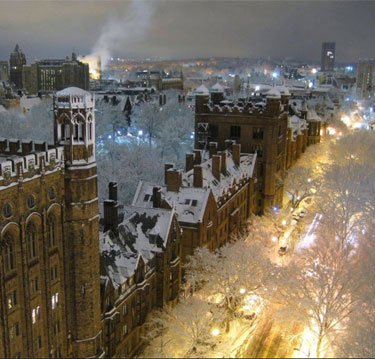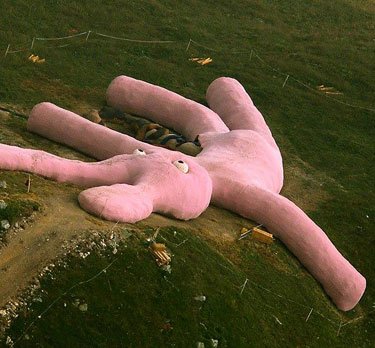(Sean Connery is present.)
New Year’s Eve or Hogmanay
History, Hogmanay, New Year's Eve, Robert Burns, Traditions

Robert Burns, author of Auld Lang Syne
(From Robert Chambers, A Book of Days, 1869)
NEW YEAR’S EVE, OR HOGMANAY
As a general statement, it may be asserted that neither the last evening of the old year nor the first day of the new one is much, observed in England as an occasion of festivity. In some parts of the country, indeed, and more especially in the northern counties, various social merry-makings take place; but for the most part, the great annual holiday-time is already past. Christmas Eve, Christmas-day, and St. Stephen’s or Boxing Day have absorbed almost entirely the tendencies and opportunities of the community at large in the direction of joviality and relaxation. Business and the ordinary routine of daily life have again been resumed; or, to apply to English habits the words of an old Scottish rhyme still current, but evidently belonging to the old times, anterior to the Reformation, when Christmas was the great popular festival:
-
Yule’s come and Yule ‘s gane,
And we hae feasted weel;
Sae Jock maun to his flail again,
And Jenny to her wheel.’
Whilst thus the inhabitants of South Britain are settling down again quietly to work after the festivities of the Christmas season, their fellow-subjects in the northern division of the island are only commencing their annual saturnalia, which, till recently, bore, in the license and boisterous merriment which used to prevail, a most unmistakable resemblance to its ancient pagan namesake. The epithet of the Daft [mad] Days, applied to the season of the New Year in Scotland, indicates very expressively the uproarious joviality which characterized the period in question. This exuberance of joyousness—which, it must be admitted, sometimes led to great excesses—has now much declined, but New-year’s Eve and New-year’s Day constitute still the great national holiday in Scotland. Under the 1st of January, we have already detailed the various revelries by which the New Year used to be ushered in, in Scotland. It now becomes our province to notice those ceremonies and customs which are appropriate to the last day of the year, or, as it is styled in Scotland, Hogmanay.
This last term has puzzled antiquaries even more than the word Yule, already adverted to; and what is of still greater consequence, has never yet received a perfectly satisfactory explanation. Some suppose it to be derived from two Greek words, άιαμηνη (the holy moon or month), and in reference to this theory it may be observed, that, in the north of England, the term used is Hagmenu, which does not seem, however, to be confined to the 31st of December, but denotes generally the period immediately preceding the New Year. Another hypothesis combines the word with another sung along with it in chorus, and asserts ‘Hogmanay, trollolay!’ to be a corruption of ‘Homma est né—Trois Bois lá” (‘A Man is born—Three Kings are there’), an allusion to the birth of our Saviour, and the visit to Bethlehem of the Wise Men, who were known in medieval times as the ‘Three Kings.’
But two additional conjectures seem much more plausible, and the reader may select for himself what he considers the most probable. One of these is, that the term under notice is derived from Hoggu-nott, Hogenat, or Hogg-night, the ancient Scandinavian name for the night preceding the feast of Yule, and so called in reference to the animals slaughtered on the occasion for sacrificial and festal purpose word hogg signifying to kill. The other derivation of Hogmanay is from ‘Au gui menez’ (‘To the mistletoe go’), or ”Au gui ľan neuf’ ‘ (‘To the mistletoe this New Year ‘), an allusion to the ancient Druidical ceremony of gathering that plant. In the patois of Touraine, in France, the word used is Aguilanneu; in Lower Normandy, and in Guernsey, poor persons and children used to solicit a contribution under the title of Hoguinanno or 0guinano; whilst in Spain the term, Aguinaldo, is employed to denote the presents made at the season of Christmas.
In country places in Scotland, and also in the more retired and primitive towns, it is still customary on the morning of the last day of the year, or Hogmanay, for the children of the poorer class of people to get themselves swaddled in a great sheet, doubled up in front, so as to form a vast pocket, and then to go along the streets in little bands, calling at the doors of the wealthier classes for an expected dole of oaten-bread. Each child gets one quadrant section of oat-cake (some-times, in the case of particular favourites, improved by an addition of cheese), and this is called their hogmanay. In expectation of the large demands thus made upon them, the housewives busy themselves for several days beforehand in preparing a suitable quantity of cakes. The children on coming to the door cry, ‘Hogmanay!’ which is in itself a sufficient announcement of their demands; but there are other exclamations which either are or might be used for the same purpose. One of these is:
-
‘Hogmanay, Trollolay,
Give us of your white bread, and none of your gray.’
And another favourite rhyme is:
Get up, goodwife, and shake your feathers,
And dinna think that we are beggars;
For we are bairns come out to play,
Get up and gie’s our hogmanay!’
The following is of a moralising character, though a good deal of a truism:
-
Get up, goodwife, and binna sweir,
And deal your bread to them that ‘s here;
For the time will come when ye’ll be dead,
And then ye’ll neither need ale nor bread.’
The most favourite of all, however, is more to the point than any of the foregoing :
My feet’s cauld, my shoon’s thin;
Gie’s my cakes, and let me rin!’
It is no unpleasing scene, during the forenoon, to see the children going laden home, each with his large apron bellying out before him, stuffed full of cakes, and perhaps scarcely able to waddle under the load. Such a mass of oaten alms is no inconsiderable addition to the comfort of the poor man’s household, and enables him to enjoy the New-year season as much as his richer neighbours.
In the primitive parish of Deerness, in Orkney, it was customary, in the beginning of the present century, for old and young of the common class of people to assemble in a great band upon the evening of the last day of the year, and commence a round of visits throughout the district. At every house they knocked at the door, and on being admitted, commenced singing, to a tune of its own, a song appropriate to the occasion. The following is what may be termed a restored version of this chant, the imagination having been called on to make up in several of the lines what was deficient in memory. The ‘Queen Mary’ alluded to is evidently the Virgin:
‘This night it is grid New’r E’en’s night,
We’re a’ here Queen Mary’s men;
And we ‘re come here to crave our right,
And that’s before our Lady.
The very first thing which we do crave,
We ‘re a’ here Queen Mary’s men;
A bonny white candle we must have,
And that’s before our Lady.
Goodwife, gae to your butter-ark,
And weigh us here ten mark.
Ten mark, ten pund,
Look that ye grip weel to the grund.
Goodwife, gae to your geelin vat,
And fetch us here a skeet o’ that.
Gang to your awmrie, gin ye please,
And bring frae there a yow-milk cheese.
And syne bring here a sharping-stane,
We’ll sharp our whittles ilka ane.
Ye’ll cut the cheese, and eke the round,
But aye take care ye cutna your thoom.
Gae fill the three-pint cog o’ ale,
The maut maun be aboon the meal.
We houp your ale is stark and stout,
For men to drink the auld year out.
Ye ken the weather’s snow and sleet,
Stir up the fire to warm our feet.
Our shoon’s made o’ mare’s skin,
Come open the door, and let’s in.’
The inner-door being opened, a tremendous rush was made ben the house. The inmates furnished a long table with all sorts of homely fare, and a hearty feast took place, followed by copious libations of ale, charged with all sorts of good-wishes. The party would then proceed to the next house, where a similar scene would be enacted. How they contrived to take so many suppers in one evening, heaven knows ! No slight could be more keenly felt by a Deerness farmer than to have his house passed over unvisited by the New-year singers.
The doings of the guisers or guizards (that is, masquers or mummers) form a conspicuous feature in the New-year proceedings throughout Scotland. The favourite night for this exhibition is Hogmanay, though the evenings of Christmas, New-year’s Day, and Handsel Monday, enjoy like-wise a privilege in this respect. Such of the boys as can lay any claim to the possession of a voice have, for weeks before, been poring over the collection of ‘excellent new songs,’ which lies like a bunch of rags in the window-sill; and being now able to screech up ‘Barbara Allan,’ or the ‘Wee cot-house and the wee kail-yardie,’ they determine upon enacting the part of guisers. For this purpose they don old shirts belonging to their fathers, and mount mitre-shaped casques of brown paper, possibly borrowed from the Abbot of Unreason; attached to this is a sheet of the same paper, which, falling down in front, covers and conceals the whole face, except where holes are made to let through the point of the nose, and afford sight to the eyes and breath to the mouth. Each vocal guiser is, like a knight of old, attended by a sort of humble squire, who assumes the habiliments of a girl, ‘with an old-woman’s cap and a broomstick, and is styled ‘Bessie: Bessie is equal in no respect, except that she shares fairly in the proceeds of the enterprise. She goes before her principal, opens all the doors at which he pleases to exert his singing powers; and busies herself, during the time of the song, in sweeping the floor with her broomstick, or in playing any other antics that she thinks may amuse the indwellers. The common reward of this entertainment is a halfpenny, but many churlish persons fall upon the unfortunate guisers, and beat them out of the house. Let such persons, however, keep a good watch upon their cabbage-gardens next Halloween!
The more important doings of the guisers are of a theatrical character. There is one rude and grotesque drama which they are accustomed to perform on each of the four above-mentioned nights; and which, in various fragments or versions, exists in every part of Lowland Scotland. The performers, who are never less than three, but sometimes as many as six, having dressed themselves, proceed in a band from house to house, generally contenting themselves with the kitchen for an arena; whither, in mansions presided over by the spirit of good-humour, the whole family will resort to witness the spectacle. Sir Walter Scott, who delighted to keep up old customs, and could condescend to simple things without losing genuine dignity, invariably had a set of guisers to perform this play before his family both at Ashestiel and Abbotsford. The drama in question bears a close resemblance, with sundry modifications, to that performed by the mummers in various parts of England, and of which we have already given a specimen.
Such are the leading features of the Hogmanay festivities in Scotland. A similar custom to that above detailed of children going about from house to house, singing the Hagmena chorus, and obtaining a dole of bread or cakes, prevails in Yorkshire and the north of England; but, as we have already mentioned, the last day of the year is not in the latter country, for the most part, invested with much peculiar distinction. One or two closing ceremonies, common to both countries—the requiem, as they may be termed, of the dying year—will be more appropriately noticed in the concluding article of this work.
Expensive, But Very, Very Cool
"The Maltese Falcon" (1941), Auction Sales, Webley Fosbery Automatic Revolver
On Gun Broker:
Scarce Webley Fosbery M1901, with matching cylinder and low serial number, that is regimentally marked. SN: 486 Cal .455. Standard military configuration M1901 with 6†barrel having fixed front and rear sight. Top of rib marked “P.WEBLEY & SON. LONDON & BIRMINGHAMâ€. Left side of frame marked with the Webley logo followed by the caliber “455 CORDITE ONLY.†Above the caliber is the owner/regimental inscription “H.T. MUNN 38th L.V.†Each of the chambers and the right side of the frame is proofed, the serial number appearing on the right side of the frame. Original, checkered wood grips with the left panel having the brass plate “safe†under the safety. Lanyard ring present. Condition: VG-Excellent. Matte blue with oxidative changes on the left side of barrel, cylinder, and release lever suggesting storage on a moist surface. Excellent, near mirror bore with sharp rifling. Perfect manual mechanics. A highly desireable Webley Fosbery with a military provenance that deserves further research.
Starting at only $12,500!
The same model automatic revolver used by that naughty Brigid O’Shaughnessy (Mary Astor) to shoot Sam Spade’s partner Miles Archer (Jerome Cowan) at Burrit Alley, just off Bush Street above the Stockton Tunnel, in “The Maltese Falcon” (1941).
Big City Machines Losing Control of the Monster They Created
Chicago, Democrats, Militarized Police, Urban Minorities, Welfare

Pretty nearly every major American city lives under a thoroughly corrupt, appallingly mismanaged one-party regime, whose permanent grip on power is based on the block voting of a property-less, non-tax-paying, practically illiterate, welfare constituency, residing under what amounts to a permanent military occupation.
Herschel Smith looks at the Chicago demonstrations demanding that Rahm Emmanuel resign over the police shooting of Laquan McDonald, and notes that the Chicago police were trained in “stability operations,” i.e. controlling an occupied population by the Israelis. American urban police, he notes, treat certain people, in certain neighborhoods, like an occupying army enforcing martial law.
While we aren’t dealing with millennia-old problems [as in the Israeli-Palestinian case], we are in fact dealing with at least fourth or fifth generation entitlement, with fatherless families, SNAP payments, welfare, “free†medical care, and so on. Just enough government largesse to keep the inner city blacks on a leash, not enough (yet) to create revolution against it. And therefore the elites get their voting bloc, which is the intended outcome all along.
But the monster this created is ugly and difficult to control. I’ve read comments about the rioters in Ferguson, to the extent that any protest against “the man†(or the state) is a good thing and they must be our ally (I’m not sure who “our†is). Such a view is a sign of lack of attention to detail, immaturity and weakness of mind. Most of the rioters in Ferguson would sooner gut you groin to throat with a knife and then rape your wife and daughter as to look at you. Anyone who feels an alliance with the rioters in Ferguson is a fool.
This is a monster the government and effete urbanite elitists created. The hive is coming apart at the seems, and the only way to keep it together is harsher and harsher stability operations. Make no mistake about it. The Chicago Mayor knows all about the tactics in use in Chicago and approves of them. The firing of the chief of police was a sacrifice to the masses.
The lesson for us is that police departments are more and more using stability operations as a model or paradigm for their work, with the approval of those in charge. As these tactics want to work their way into the fabric of American society like a cancer, one goal will be to kill the cancer before it takes over the host. This battle will be gradual, fought initially on the fields of town hall meetings, boards, blogs, and so on. If the battles are lost there, it will expand, and if lost entirely, dystopia (and maybe insurgency) will come to the American countryside.
The wars for the inner city cannot be won. America is going broke and the largesse cannot continue forever. Sooner or later, the riots will expand. The more important thing will be what happens to the medium and smaller towns of America?
Hat tip to Vanderleun.
Yale in Winter
Photography, Yale University

The College Street edge of the Yale Old Campus (where freshmen reside), with Sterling Library and the Payne-Whitney Gymnasium in the left background and Klein Biology Tower in the distance on the right. I can see the window of my freshman year bedroom on the ground floor of Welch Hall (just this side of Phelps Gate) quite clearly.
Leftists Turning on the Liberals
Irony, Liberals, Social Justice Warriors, The Left

Yale students confront Silliman College Master Nicholas Christakis
Victor Davis Hanson tends to chuckle when he sees the Revolution devouring its own.
The West is ablaze with protests not just because of the failure of the Left in the cities, on campuses, and across Europe to offer a workable paradigm, but also because of the Left’s canonic assurances that it could and would.
Deans and mayors promised utopia. When it did not arrive, the only concession they had left was more failed efforts to achieve the unachievable. People turn on their own more violently than they turn on others, as if a liberal, paternal dean should be able to snap his fingers and make liberal students happy. When he so promises, his ensuing failure only makes things worse.
All the banned micro-aggressions, all the safe spaces, all the trigger warnings, and all the fired deans will not make today’s postmodern students happy, much less appreciative, any more than would mandating authentic ethnic cooks and more year-round hot-tubs. Like addicts, they believe one more cheap fix from a compliant supplier will finally do the trick. Don’t expect the addict to show gratitude to his dealer.
Leftist revolutionaries cannot be satisfied, because they have long ago been given all they asked for, and are now rebelling for the idea of rebelling against something, even if it is reduced to a micro-aggression or founded on a myth like “Hands up, don’t shoot.†Millions of inner-city youths are as furious as are elite students. They got the liberal city and the liberal university they wanted — only to rage that human nature is not liberal and that contentment cannot be found through mirror-image government, but only within themselves. How can you rebel against that age-old truth?
Read the whole thing.
Whole Foods Revisited
Community of Fashion, Whole Foods

Kelly McLean visits her local Whole Foods.
Whole Foods is like Vegas. You go there to feel good but you leave broke, disoriented, and with the newfound knowledge that you have a vaginal disease.
Unlike Vegas, Whole Foods’ clientele are all about mindfulness and compassion… until they get to the parking lot. Then it’s war. As I pull up this morning, I see a pregnant lady on the crosswalk holding a baby and groceries. This driver swerves around her and honks. As he speeds off I catch his bumper sticker, which says ‘NAMASTE’. Poor lady didn’t even hear him approaching because he was driving a Prius. He crept up on her like a panther.
As the great, sliding glass doors part I am immediately smacked in the face by a wall of cool, moist air that smells of strawberries and orchids. I leave behind the concrete jungle and enter a cornucopia of organic bliss; the land of hemp milk and honey. Seriously, think about Heaven and then think about Whole Foods; they’re basically the same. …
Next I see the gluten-free section filled with crackers and bread made from various wheat-substitutes such as cardboard and sawdust. I skip this aisle because I’m not rich enough to have dietary restrictions. Ever notice that you don’t meet poor people with special diet needs? A gluten intolerant house cleaner? A cab driver with Candida? Candida is what I call a rich, white person problem. You know you’ve really made it in this world when you get Candida. My personal theory is that Candida is something you get from too much hot yoga. All I’m saying is if I were a yeast, I would want to live in your yoga pants. …
A thousand minutes later, I get to the cashier. She is 95 percent beautiful. “Have you brought your reusable bags?” Fuck. No, they are at home with their 2 dozen once-used friends. She rings up my meat, alcohol, gluten and a wrapper from the chocolate bar I ate in line, with thinly veiled alarm. She scans my ladies acidophilus, gives me a pitying frown and whispers, “Ya know, if you wanna get rid of your Candida, you should stop feeding it.” She rings me up for $313. I resist the urge to unwrap and swallow whole another $6 truffle in protest. Barely. Instead, I reach for my wallet, flash her a quiet smile and say, “Namaste.”
Read the whole thing.









